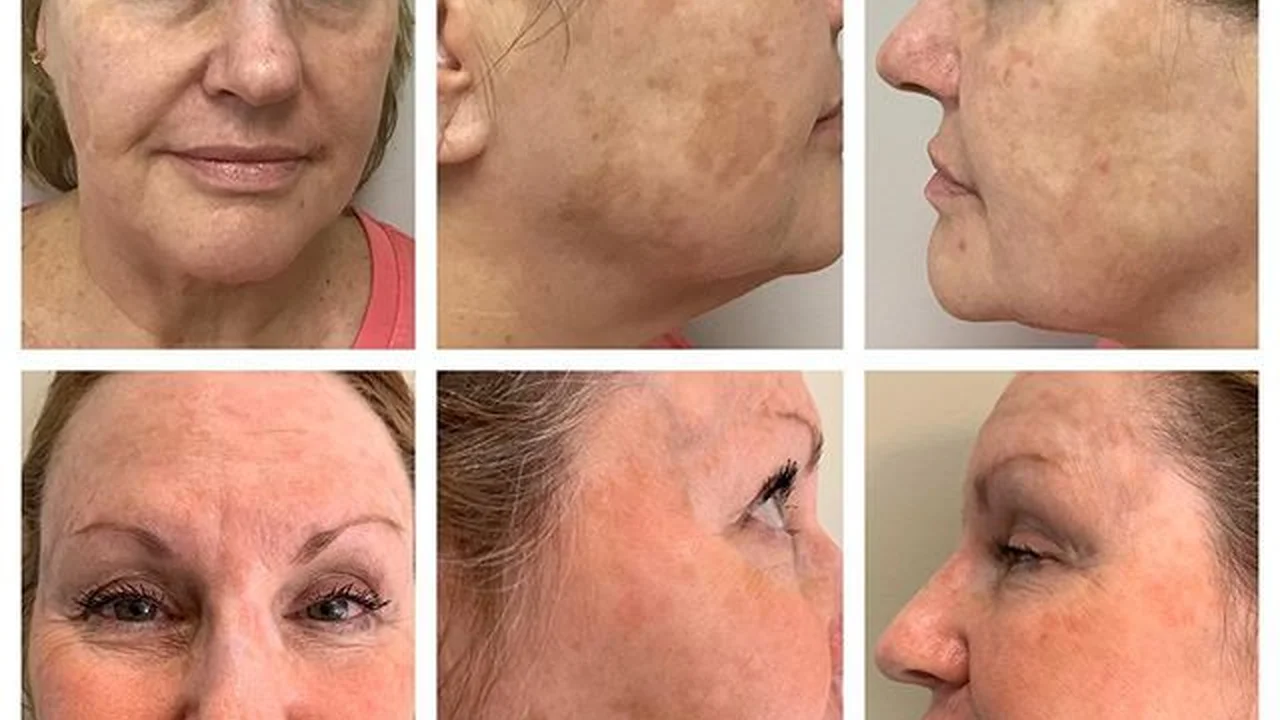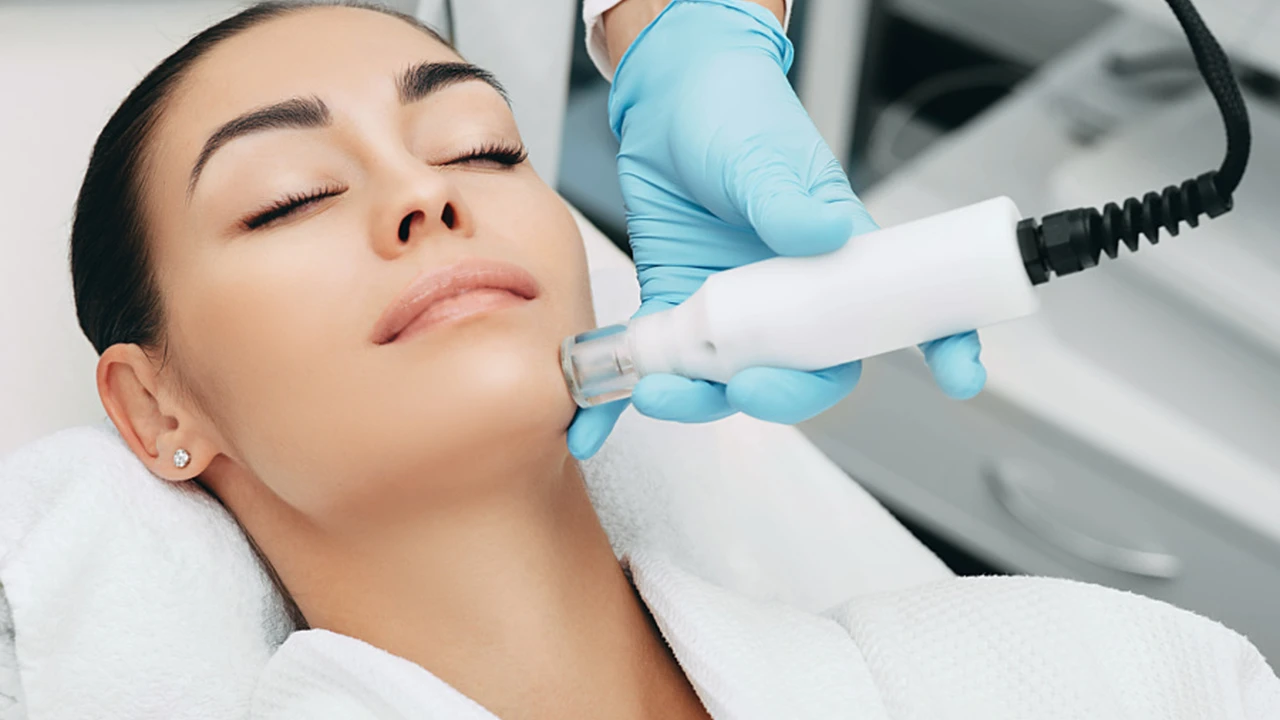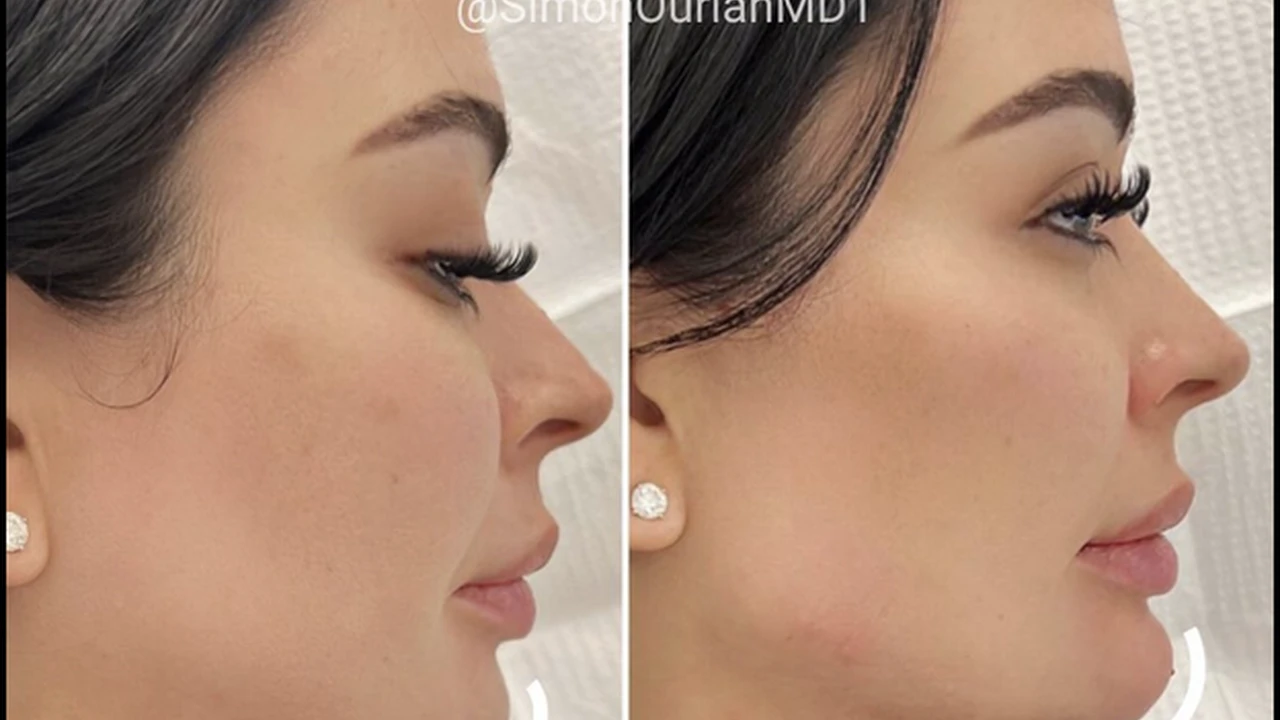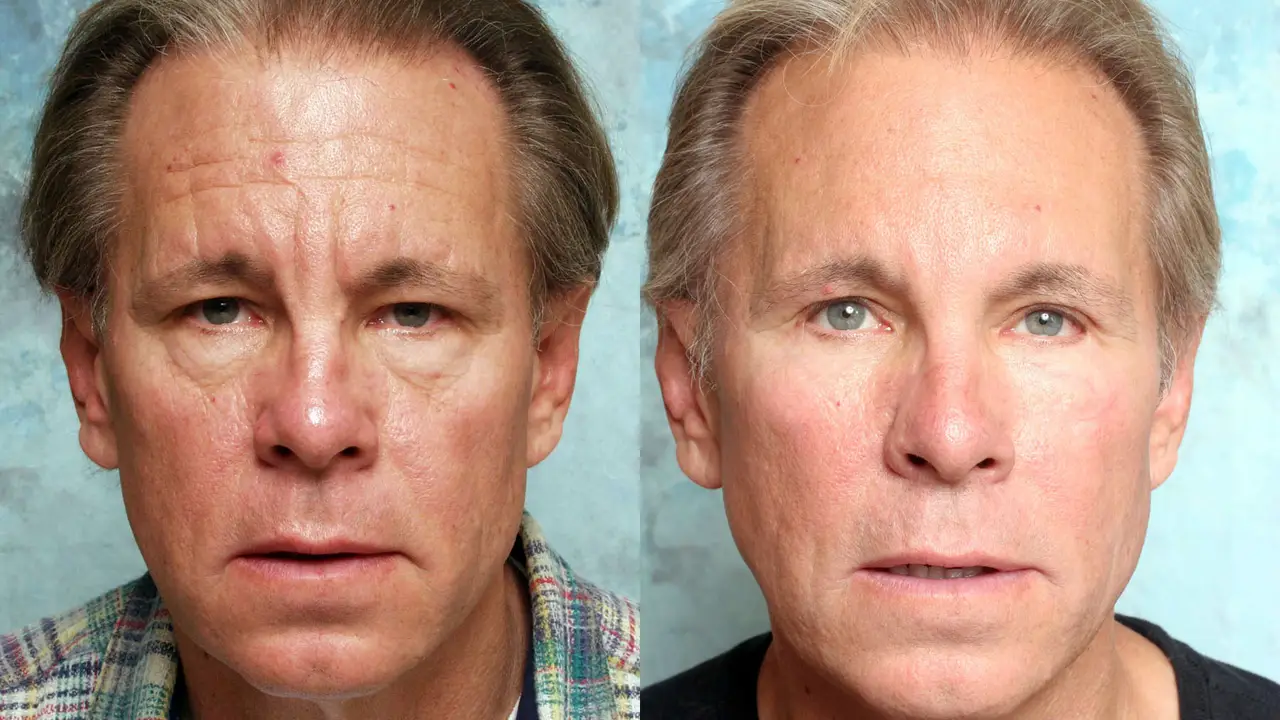Combining Laser Resurfacing and Chemical Peels

Understanding the Synergistic Effects of Combined Aesthetic Treatments
The world of aesthetic treatments is constantly evolving, with new technologies and techniques emerging regularly. While individual treatments can offer significant improvements, combining certain procedures can often yield even more dramatic and satisfying results. This approach, known as combination therapy, leverages the unique strengths of different treatments to address multiple concerns simultaneously and achieve synergistic effects. But what exactly makes combining treatments so effective?
The key lies in understanding how different treatments work and how they can complement each other. For example, one treatment might target surface-level imperfections, while another works deeper within the skin to stimulate collagen production. By combining these approaches, you can address both the immediate visible concerns and the underlying causes of skin aging or damage.
One of the most compelling examples of this synergy is the combination of laser resurfacing and chemical peels. As mentioned previously, these two treatments, when used together, can provide a more comprehensive approach to skin rejuvenation than either treatment alone. Let's delve deeper into why this combination is so powerful and explore other potential combinations for optimal results.
Laser Resurfacing and Chemical Peels A Powerful Combination for Skin Rejuvenation
Laser resurfacing and chemical peels are both effective methods for improving skin texture, tone, and overall appearance. However, they work in different ways and target different layers of the skin. Laser resurfacing uses concentrated beams of light to remove damaged outer layers of skin, stimulating collagen production and promoting the growth of new, healthy skin cells. Chemical peels, on the other hand, involve applying a chemical solution to the skin, which exfoliates the outer layers and reveals smoother, brighter skin underneath.
When combined, these treatments can offer a more comprehensive approach to skin rejuvenation. The chemical peel can help to prepare the skin for laser resurfacing by removing surface debris and allowing the laser to penetrate more effectively. The laser, in turn, can address deeper wrinkles and imperfections that the chemical peel might not be able to reach. This combination can also lead to faster healing times and more dramatic results than either treatment alone.
Specific Product Recommendations for Laser Resurfacing Aftercare and Chemical Peel Neutralization
Choosing the right products for aftercare is crucial for maximizing the benefits of laser resurfacing and chemical peels. Here are some specific product recommendations:
- Laser Resurfacing Aftercare:
- Avène Cicalfate+ Restorative Protective Cream: This cream is specifically formulated for post-procedure skin. It contains a blend of ingredients that soothe irritation, promote healing, and protect the skin from environmental aggressors. Price: Approximately $30.
- EltaMD UV Clear Broad-Spectrum SPF 46: Sun protection is paramount after laser resurfacing. This sunscreen is lightweight, oil-free, and provides broad-spectrum protection against UVA and UVB rays. Price: Approximately $37.
- Aquaphor Healing Ointment: This ointment provides a protective barrier to keep the skin moisturized and prevent infection. It's a classic choice for post-laser care. Price: Approximately $10.
- Chemical Peel Neutralization:
- Neutralizing Solution (usually provided by the aesthetician): Most professional chemical peels require a neutralizing solution to stop the peeling process. This is typically provided by the aesthetician who performs the peel.
- Cool Water and Gentle Cleanser: If a neutralizing solution isn't available, cool water and a gentle cleanser can be used to carefully remove the peel.
- La Roche-Posay Toleriane Hydrating Gentle Cleanser: A gentle, hydrating cleanser is essential for removing any residual peel solution without irritating the skin. Price: Approximately $15.
Real World Use Cases and Patient Experiences with Combined Treatments
Let's look at some real-world examples of how combining laser resurfacing and chemical peels can benefit patients:
- Case Study 1: A 45-year-old woman with sun-damaged skin and fine lines underwent a series of chemical peels followed by fractional CO2 laser resurfacing. The chemical peels helped to exfoliate the skin and improve its texture, while the laser resurfacing targeted deeper wrinkles and stimulated collagen production. The patient experienced a significant improvement in her skin's overall appearance, with reduced fine lines, wrinkles, and sunspots.
- Case Study 2: A 38-year-old man with acne scarring and uneven skin tone received a combination of chemical peels and non-ablative laser resurfacing. The chemical peels helped to reduce the appearance of acne scars and improve skin texture, while the laser resurfacing stimulated collagen production and improved skin tone. The patient reported a significant improvement in his skin's overall appearance and confidence.
These are just a few examples of how combining laser resurfacing and chemical peels can be effective for a variety of skin concerns. Patient experiences often highlight the enhanced results and faster recovery times associated with this combined approach.
Comparing Different Types of Lasers and Chemical Peels for Optimal Treatment Selection
Not all lasers and chemical peels are created equal. Different types of lasers and peels are designed to address specific skin concerns and offer varying levels of intensity. Choosing the right combination for your individual needs is crucial for achieving optimal results.
Laser Types Comparison for Skin Resurfacing
- CO2 Laser: The most aggressive type of laser resurfacing, CO2 lasers are effective for treating deep wrinkles, scars, and severe sun damage. They offer dramatic results but also require a longer recovery period.
- Erbium Laser: Erbium lasers are less aggressive than CO2 lasers and are better suited for treating fine lines, wrinkles, and mild sun damage. They offer less downtime but also less dramatic results.
- Fractional Laser: Fractional lasers deliver energy to the skin in a fractionated pattern, leaving some areas of the skin untouched. This allows for faster healing and less downtime while still providing significant results.
- Pulsed Dye Laser: Primarily used for treating redness and vascular lesions, but can also improve skin texture and tone.
Chemical Peel Types Comparison for Skin Exfoliation
- Superficial Peels: These peels use mild acids, such as alpha-hydroxy acids (AHAs), to exfoliate the outermost layer of skin. They are ideal for treating mild acne, fine lines, and uneven skin tone. Examples include glycolic acid and lactic acid peels.
- Medium-Depth Peels: These peels use stronger acids, such as trichloroacetic acid (TCA), to penetrate deeper into the skin. They are effective for treating moderate wrinkles, sun damage, and acne scars.
- Deep Peels: These peels use the strongest acids, such as phenol, to penetrate the deepest layers of the skin. They are effective for treating severe wrinkles, scars, and sun damage but require a longer recovery period and carry a higher risk of complications.
The ideal laser and chemical peel combination will depend on your specific skin concerns, skin type, and desired results. Consulting with a qualified dermatologist or aesthetician is essential for determining the best treatment plan for you.
Detailed Information on Laser Resurfacing Procedure and Chemical Peel Application
Understanding the procedures involved in laser resurfacing and chemical peels can help you feel more informed and prepared for your treatment.
Laser Resurfacing Procedure Details
- Consultation: Your provider will assess your skin and discuss your goals to determine if laser resurfacing is right for you.
- Preparation: The skin is cleansed, and a topical anesthetic cream is applied to minimize discomfort.
- Laser Treatment: The laser is used to deliver energy to the skin, removing damaged outer layers and stimulating collagen production. The specific settings and number of passes will depend on the type of laser and the severity of your skin concerns.
- Aftercare: The skin is kept moist with a protective ointment, and sun protection is essential. You may experience redness, swelling, and peeling for several days to weeks, depending on the type of laser used.
Chemical Peel Application Details
- Consultation: Your provider will assess your skin and discuss your goals to determine the appropriate type of chemical peel.
- Preparation: The skin is cleansed, and a protective ointment is applied to sensitive areas.
- Peel Application: The chemical solution is applied to the skin, and the provider will monitor the skin's reaction. The length of time the peel is left on the skin will depend on the type of peel and your skin's sensitivity.
- Neutralization: The peel is neutralized with a neutralizing solution or cool water.
- Aftercare: The skin is kept moisturized, and sun protection is essential. You may experience redness, peeling, and flaking for several days.
Pricing Considerations and Cost Analysis for Combination Treatments
The cost of combination treatments can vary depending on several factors, including the type of laser and chemical peel used, the provider's experience, and the geographic location. It's important to factor in the cost of the treatments themselves, as well as any associated costs, such as pre- and post-treatment products and follow-up appointments.
General Price Ranges:
- Laser Resurfacing: Prices can range from $500 to $3,000 or more per treatment, depending on the type of laser and the area being treated. Fractional laser treatments are often less expensive than full ablative laser treatments.
- Chemical Peels: Prices can range from $100 to $800 or more per treatment, depending on the depth and type of peel. Superficial peels are generally less expensive than medium-depth or deep peels.
Cost Analysis for Combination Treatments:
Combining laser resurfacing and chemical peels will typically cost more than either treatment alone. However, the enhanced results may justify the higher cost for some patients. It's important to discuss pricing with your provider and get a clear understanding of all the costs involved before proceeding with treatment.
Financing Options:
Many providers offer financing options to help patients manage the cost of aesthetic treatments. These options may include payment plans or financing through third-party lenders. Be sure to inquire about financing options during your consultation.
Exploring Other Effective Combination Treatment Strategies for Various Skin Concerns
The combination of laser resurfacing and chemical peels is just one example of how combining treatments can enhance results. Many other effective combination treatment strategies can address various skin concerns. Here are a few examples:
- Microneedling and Radiofrequency (RF): Microneedling creates tiny punctures in the skin, stimulating collagen production. When combined with RF energy, the collagen stimulation is amplified, leading to improved skin texture, tone, and firmness.
- Botox and Dermal Fillers: Botox relaxes muscles to reduce the appearance of wrinkles, while dermal fillers add volume to plump up the skin. Combining these treatments can provide a more comprehensive approach to facial rejuvenation.
- IPL (Intense Pulsed Light) and Chemical Peels: IPL targets pigmentation and redness, while chemical peels exfoliate the skin and improve its texture. This combination can be effective for treating sun damage, age spots, and uneven skin tone.
- Ultherapy and Injectables: Ultherapy uses ultrasound energy to lift and tighten the skin, while injectables like fillers can restore volume loss. Combining these treatments can provide a non-surgical facelift effect.
Maintaining Optimal Results Long Term Post Treatment Strategies
Achieving optimal results with combination treatments is only the first step. Maintaining those results long-term requires a commitment to a healthy skincare routine and lifestyle habits.
- Sun Protection: Sun protection is essential for preventing further skin damage and maintaining the results of your treatments. Use a broad-spectrum sunscreen with an SPF of 30 or higher every day, even on cloudy days.
- Skincare Routine: Follow a consistent skincare routine that includes cleansing, moisturizing, and using products that are appropriate for your skin type and concerns.
- Healthy Lifestyle: A healthy lifestyle, including a balanced diet, regular exercise, and adequate sleep, can contribute to overall skin health and help maintain the results of your treatments.
- Maintenance Treatments: Consider scheduling periodic maintenance treatments to help prolong the results of your initial combination treatment. This may include occasional chemical peels, laser treatments, or other procedures.
Ultimately, the best approach to maintaining optimal results is to consult with your provider and develop a personalized plan that addresses your specific needs and goals. By combining effective treatments with a proactive approach to skincare and lifestyle, you can enjoy long-lasting improvements in your skin's appearance and overall health.
:max_bytes(150000):strip_icc()/277019-baked-pork-chops-with-cream-of-mushroom-soup-DDMFS-beauty-4x3-BG-7505-5762b731cf30447d9cbbbbbf387beafa.jpg)






